about Saihoji
A Guide to Saihoji

1,300 years have passed since the high priest and bodhisattva Gyoki founded Saihoji, converting a villa that had formerly belonged to Prince Shotoku (574-622) into a Buddhist temple in Kyoto. The temple has overcome many trials and tribulations over the centuries until reaching the present day, including two sect conversions, war, and floods. The garden, which has been officially designated a Special Place of Scenic Beauty, dates back to the Muromachi Period (1336-1573). At the time, it was made in the dry landscape garden (karesansui) style with white sand and green pines. The first such garden in the world, it represented an innovation that overturned gardening conventions of the day. Today, the entire garden is covered with over 120 varieties of moss, earning the temple the nickname of “Moss Temple” (Koke-dera). This page will give you an overview of the Saihoji grounds that have been loved by so many people over the centuries.
Main Hall (Sairai-do)

The temple’s main hall was rebuilt in 1969 under the supervision and design of Kyoto University Professor Murata Jiro. The hall got its name Sairai-do from Muso Kokushi, who restored the temple in the 14th century. The kanji characters literally mean, “the hall coming from the west” and it derives from the phrase “soshi sairai-i,” which means, “the Daruma (Bodhidarma) that brought Zen to China is coming from the west (India).” The hall’s interior sliding door (fusuma) paintings, consisting of 104 panels in total, are abstract paintings by famed 20th century artist Domoto Insho. The temple’s principal image is Amida Nyorai, who is associated with Bodhisattva Gyoki. When visitors enter the temple, they will first be requested to copy sutras in the Sairai-do.
The Sunset Spring in front of the Sairai-do has been producing fresh water for over 1,400 years, dating back to before the initial foundation of the temple, when it was still one of Prince Shotoku’s villas. Together with the Sunset Spring north of the Shonantei Pavilion, it is the source of water for the Golden Pond and the temple’s akai well. The akai is a well from which water known as aka water is drawn for use in Buddhist rituals. The water from this particular well is famously used to wash the statue of Shakyamuni Buddha at Seiryoji Temple in a ritual held every year on April 19 called “Cleansing of the Body” (ominugui).
The Gardens
Saihoji’s nickname “Moss Temple” (Koke-dera) comes from the beauty of the moss covering its gardens. The name was popularized when Osaragi Jiro’s novel Homecoming (Kikyo) was made into a film in 1950, and is today practically synonymous with the temple’s official name. The garden has been officially designated as both a Historic Site and a Special Place of Scenic Beauty, and is divided into two sections: the upper and lower gardens. The upper garden was made in the dry landscape garden (karesansui) style, while the lower garden is centered on the Golden Pond (Ogonchi) and follows the “strolling garden surrounding a pond” (chisen kaiyu) style. When Muso Kokushi first created the gardens, they supposedly included ten exceptional spots called the Saihoji Temple Ten Sites. Although none of them exist anymore, reconstructed buildings like the Shonantei Pavilion and Tanhokutei Pavilion were named after the Ten Sites.
(The upper garden is closed to the public.)
The Strolling Garden Surrounding a Pond (Lower Garden)
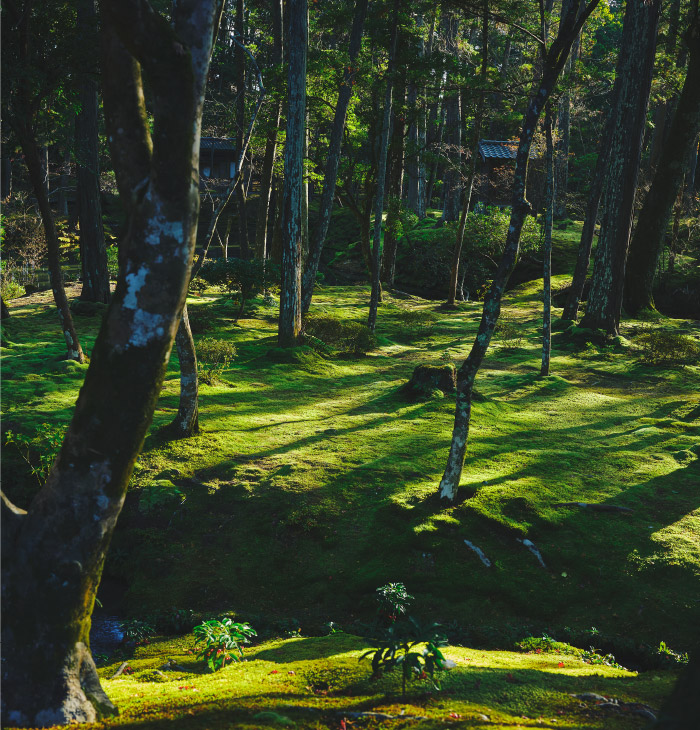
The lower garden has been designed as a “strolling garden surrounding a pond” and is centered on the Golden Pond, which resembles the Chinese character for “heart.” Three tea houses stand along the walking path, and a small boat sits in the water as a reminder of the times when shoguns such as Yoshimitsu and Yoshimasa of the Ashikaga Dynasty came to view the gardens from a boat in the pond.
The Dry Landscape Garden (Upper Garden)(Closed to the public)
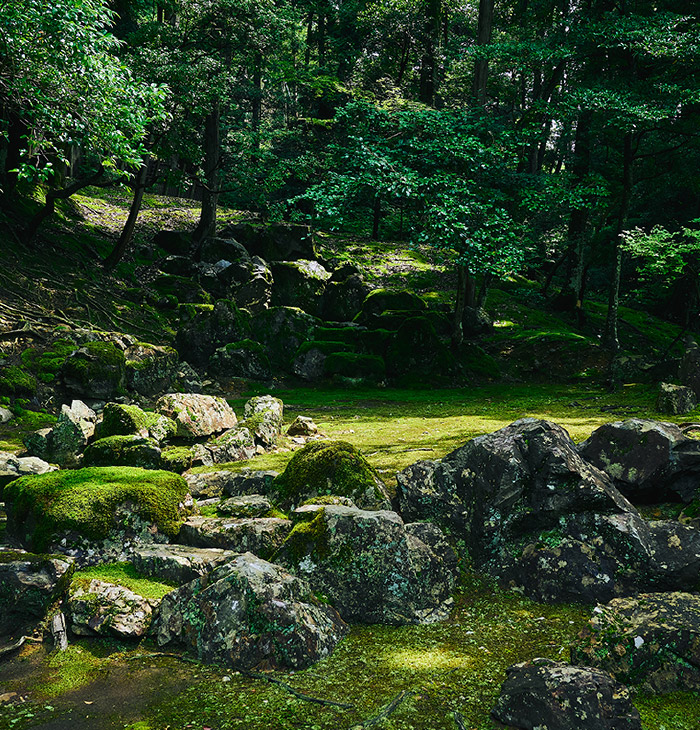
Built by Muso Kokushi in 1339, the dry landscape garden at Saihoji is the oldest such garden in the world. The stones are arranged to represent waterfalls in three levels (upper, middle, and lower), and are said to have been modeled on the tomb that Muso Kokushi built for himself while he still lived. Before 1339, most Japanese gardens had ponds as their focal point. Muso Kokushi not only put stone arrangements at the center, but he also built the garden as an expression of Zen spirituality. Muso Kokushi believed that the garden itself would serve as a training ground for Zen practitioners. As such, the circumstances that brought about his enlightenment are contained in this garden. The dry landscape garden at Saihoji became the origin of all dry landscape gardens, and it is regarded as the pinnacle of this style of garden within Japan.
The Golden Pond
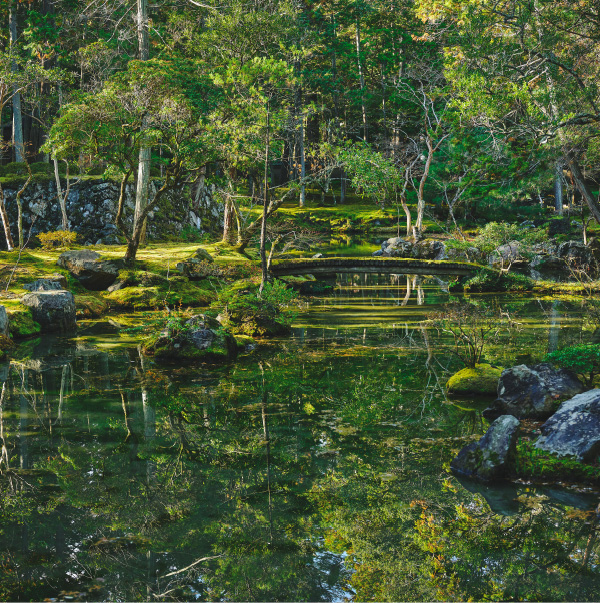
The Golden Pond at Saihoji is shaped like the Chinese character for “heart” (kokoro 心). There are now two large islands in the pond—the Island of the Rising Sun (Asahi-ga-jima) and the Island of the Setting Sun (Yuhi-ga-jima). The deity Inari Myojin is enshrined in a chapel built on the Island of the Setting Sun.
Shoan-do tea house
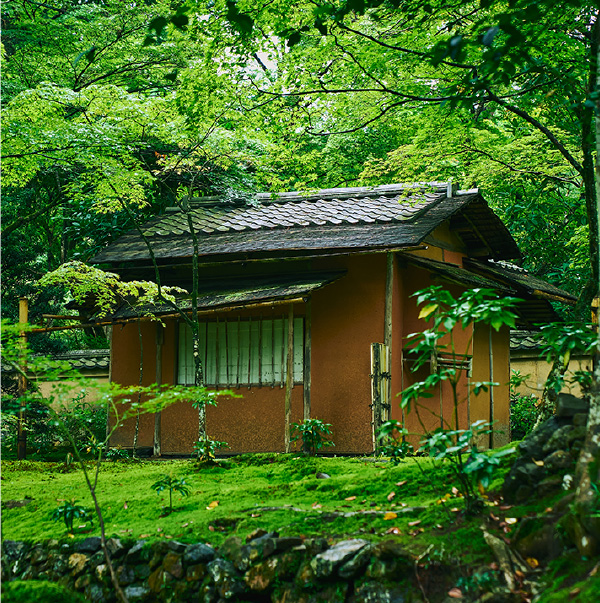
The tea house was built in 1920, enshrining a wooden statue of Sen no Shoan, the son of the great tea master Sen no Rikyu, who perfected the Wabi-cha style of tea ceremony. It was built by Kosaka Asajiro, a master builder of Sukiya-style tea houses who was active in Kyoto during the Taisho Era (1912-1926).
The Shonantei Pavilion
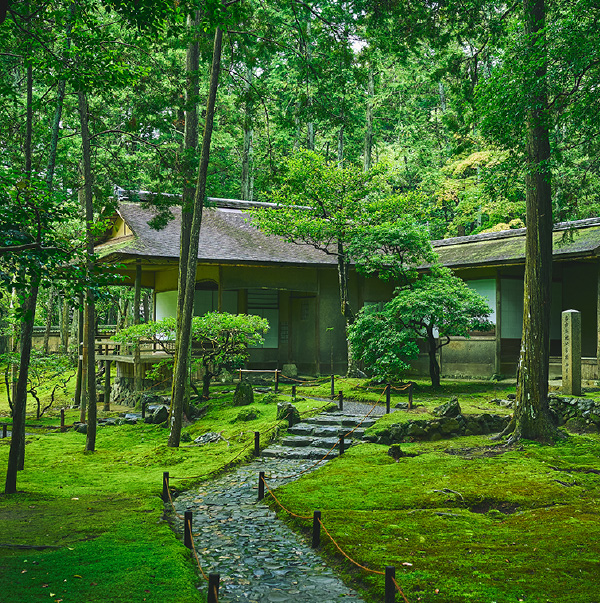
Built by Sen no Shoan during the Momoyama Period (1568-1600), the Shonantei Pavilion tea house is the oldest building on the Saihoji grounds and has been designated a National Important Cultural Property. It is said that the famous tea master, Sen no Rikyu, came here to quieten his heart after being ordered to commit ritual suicide by Toyotomi Hideyoshi. Iwakura Tomomi also came here when he was on the run from shogunate forces during the Meiji Restoration. The pavilion has a unique moon-viewing spot that faces north instead of the more usual eastern or southern directions. The reason for this unusual orientation is supposedly to allow viewers to appreciate the view of the moon reflected on the Golden Pond, rather than to look at it in the sky.
The Tanhokutei Pavilion

The Tanhokutei Pavilion is a “table and chair” (ryurei-shiki) style tea house on the eastern side of the garden. Though it has existed since the time of Muso Kokushi, the current pavilion is a reconstruction from 1928. It takes its name from a koan in the 18th teaching of the The Blue Cliff Record (Hekiganroku), a book of Zen sayings. Visitors can read the koan from a ceramic tablet displayed on the wall of the Tanhokutei Pavilion.
The Shumyo Gate

Visitors enter through the Shumyo Gate, a hirakara-style gate with a gabled, cypress bark roof that was restored in the Showa Era (1926-1989). The phrase “shumyo” appears in the work of the Chinese philosopher Lao Tzu in the phrase, “mystery of mysteries, the gate of all wonders” (gen no mata gen, shumyo no mon) and refers to the place that is the source of all things. When Muso Kokushi rebuilt the temple in the 14th century, one of the Saihoji Temple Ten Sites of noteworthy spots was called the Shumyo Gate, so when this current gate was rebuilt, it inherited the name of Shumyo Gate.
Kannon-do Hall
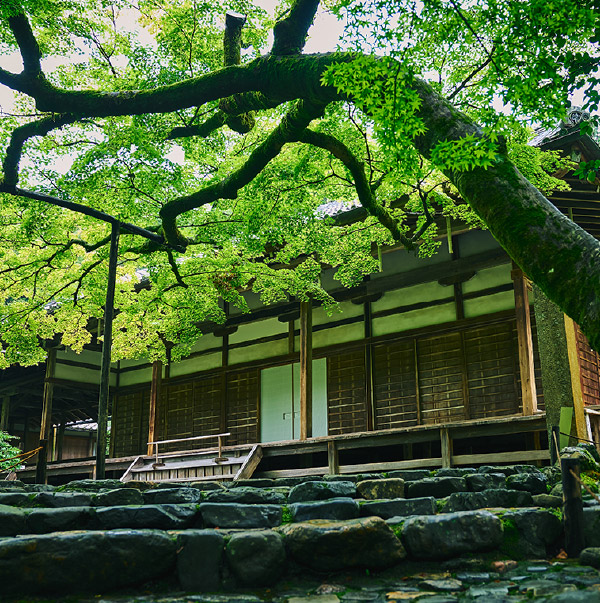
A standing image of the holy Kannon Bodhisattva is enshrined at the Kannon-do Hall. It served as the temple’s main hall until the Sairai-do was rebuilt in the Showa Era.
Main Gate
(Closed to the public)
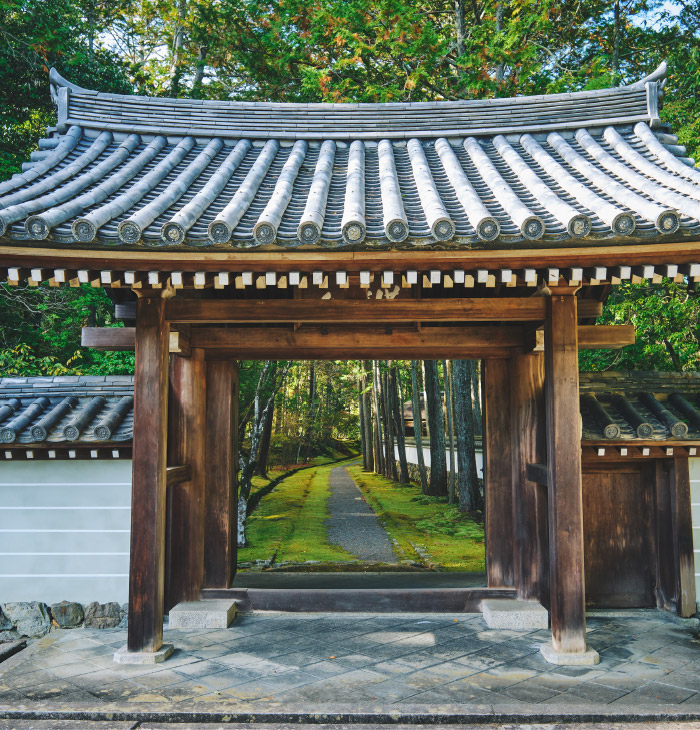
The temple’s main gate is built in the Yakui-mon style with a tiled roof. It has remained closed for over 40 years since the temple introduced its visiting policy requiring reservations in 1977. In the 1970s, Saihoji boasted the fourth-highest number of visitors among all temples in Kyoto. Once traversed not only by numerous tourists but also countless schoolchildren and students on field trips, the temple approach is now tranquil and overgrown with moss. In a way, it is symbolic of the temple’s decision to introduce a reservation system for visitors.

